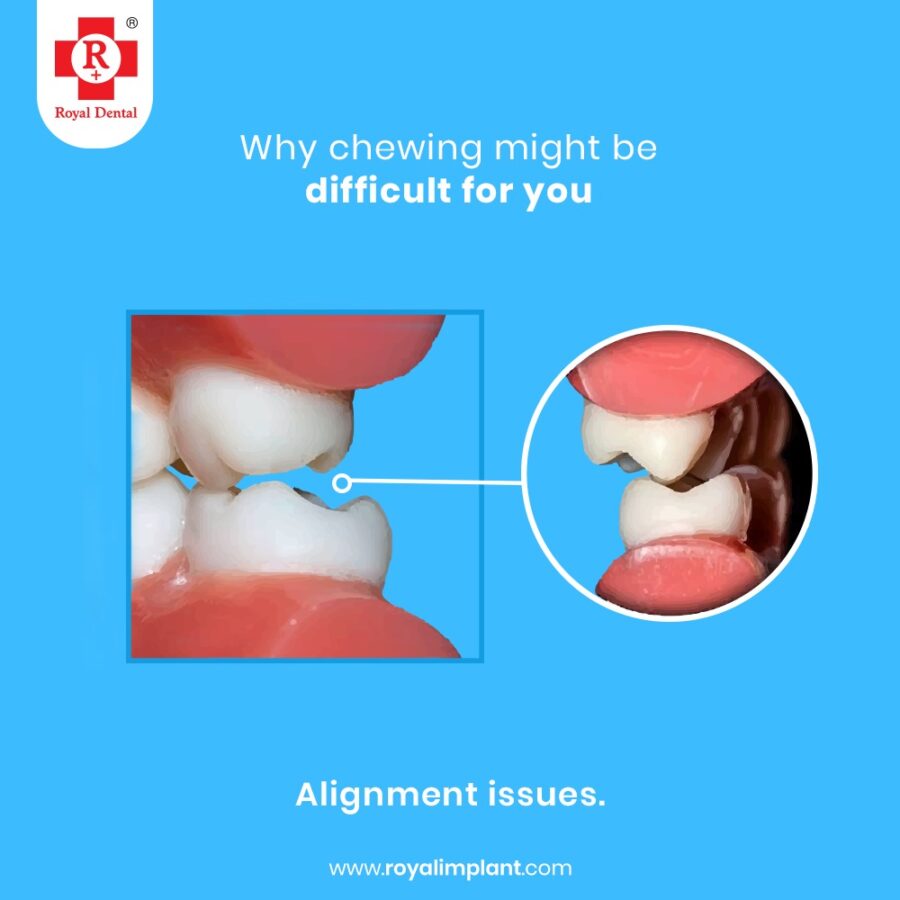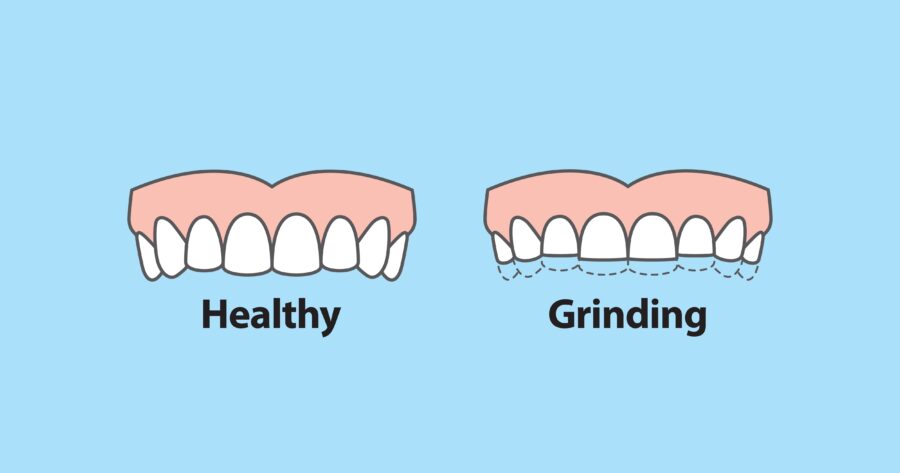Unlike natural teeth, dental implants do not decay at all. Bacteria in your mouth cannot corrode ceramic crowns, titanium posts, and polymer crowns. Because of this, your dental implants can serve you better and longer than natural teeth. Since dental implants mimic the natural function of teeth, you don’t have to worry about your teeth shaking or falling out — allowing you to bite and chew as though you had a full set of natural teeth.
Chewing Mechanism of natural teeth
Chewing consists of many components which sync perfectly to reduce the food into bolus. Briefly the mechanisms involved include, the dentition, TMJ, musculature, salivary gland, and tongue. All of these processes are under the control of the nervous system which continuously take feedback and optimize this chewing mechanism.
The chewing motion involves reduction of big and hard food into small and soft pieces. This process is mechanico-chemical in nature. The saliva breaks down the complex structures into simpler forms and the dentition physically grinds the food into small bits. The physical grinding of the food involves striking the food between the dentition and churning with the help of tongue.

Eating your food with Natural Teeth vs Implant
The position of the food while striking is determined by the size and hardness. Large and hard food would be placed between the molars and then the tongue would bring the smaller and softer food for chewing with premolars.
The maximum limit of the movement of the jaw is determined grossly by the TMJ and muscles. And, the fine movement is controlled by the guidance mechanism of the dentition. The canines act as the lateral stops & the anterior act as the extrusive stops.
The final crushing of the food happens by the movement contact of back teeth from the muscular contact position to inter cuspal position.
Difference in Implant vs Teeth load
The limit to the force applied by this system is the maximum force which can exerted by the muscles of the jaw or the fracture strength of the dentition. As the fracture strength of the dentition is lower when compared to the maximum muscle force therefore that becomes the limiting factor. But in cases where the dentition is not providing information on the force then the limit becomes the muscle force. This is where, there is a difference in perception of chewing with dental implants and natural teeth.
The feedback from the chewing system prompts the compensatory mechanisms to act. These compensatory mechanisms are set to provide the most stable occlusal scheme. When this system is overloaded, it can result into pain, swelling, permanent damage, & fractures to the weaker points.

Forces from bite with Dental Implant vs Teeth
✦ Higher forces on the natural teeth result in stress related changes in the bone i.e. changes in the trabeculae pattern.
♥ Nerves of the natural tooth can supply information of pressure, & angle of pressure. In natural process of wear and tear multiple activities are carried out by the body to make sure the bite remains constant and efficient. Some of the changes are highlighted below:
✦ Supra eruption of teeth to the plane of occlusion. Once one the teeth is worn off, its role is taken by another tooth. And this cycle continues. While the other tooth has now taken the role of biting this tooth now supra erupts and resumes the role of chewing. This cycle helps in maintaining the balance of bite.

♥ Based on the angle of the biting force and the quantum of the biting force the periodontal ligament of the tooth can widen to take a larger impact.
✦ Also, the bite force results in increased trabeculae pattern perpendicular to the bite force in the jaw/alveolar bone. This helps to divide the stress of the biting over a larger surface area.
♥ The joint of the jaw undergoes bony changes and adapts to the changing bite.
Muscles to support chewing
There are 4 pair of primary muscles and 4 pair of secondary muscles responsible for chewing. The different arrangement and tension gradient in these 16 muscles can compensate for the changes in the occlusion/bite.
The whole dentate system inclusive of teeth, bone, muscle and joint along with the continuous involvement of the brain helps to maintain the oral health. When, we intervene to improve the oral health, we have to make sure to keep these compensatory mechanisms in check and functioning.
Dental Implant just like natural teeth
In case of dental implant, the information with the natural tooth supplies to the brain is absent. There it is our duty to make sure that while the body compensates for the natural teeth we also compensate for the artificial teeth and implant.
In dental implants, the pain in case of excessive force cannot be felt due to absence of nerve also, there are no changes in the trabeculae pattern of the bone as there is no feedback. This results in bone loss and swelling and pain, failure of implant, fracture of implant and fracture of prosthesis. As dentists, by periodically adjusting the direction and quantum of force we can prevent this sequalae.
In cases multiple dental implants are placed due to multiple missing teeth, the amount of information which is supplied to the brain is also reduced. Therefore, for multiple missing teeth, the amount of involvement of the dentist is also higher. The dentist also needs to be better suited to understand the occlusion better with factors of the joint and muscle.
In cases where all the teeth are absent and the restoration is through dental implants only, there is no information provided by the local area. The amount of force, angle of force etc is not communicated well. It is very common for patients to complain of inability to chew food efficiently or repeated breakage/ loosening of prothesis. This is mainly due to the inability of the body to get a feedback with regards to the status of dentition.
Patient speaks on eating with implants
Conclusion
Save damaged natural teeth as the proprioception is very important.
To get better feedback for efficient chewing, let the bridge have cross arch support. This would result in torquing of the bridge under biting force. This torquing can act as a feedback loop. This feedback where can control the direction and the quantum of force.
Let the occlusion be canine or anterior guided only. This helps for the spatial feedback for better control.
Use of SAPTeeth, as they would reduce the forces which the implant, bone or natural teeth have to take. Also when connecting the implant and natural tooth these act as shock absorbers and may function as interim periodontal ligaments for the implant.
Follow Us For More Updates






